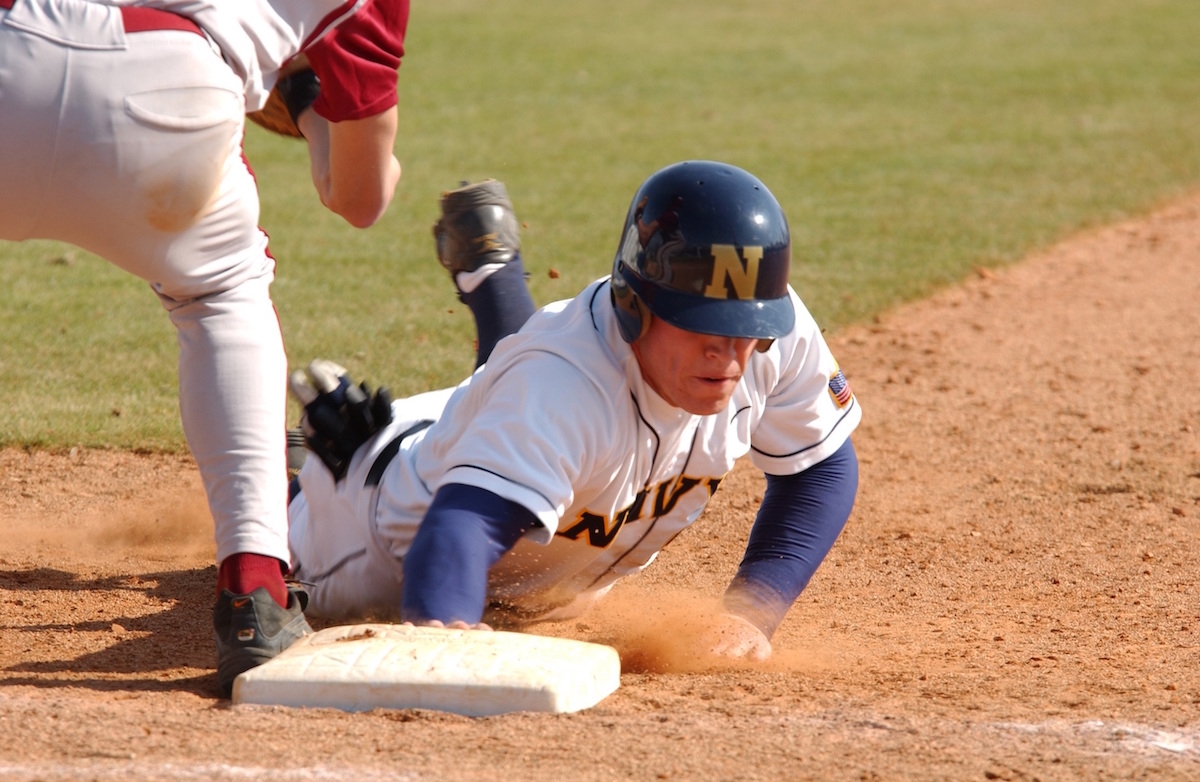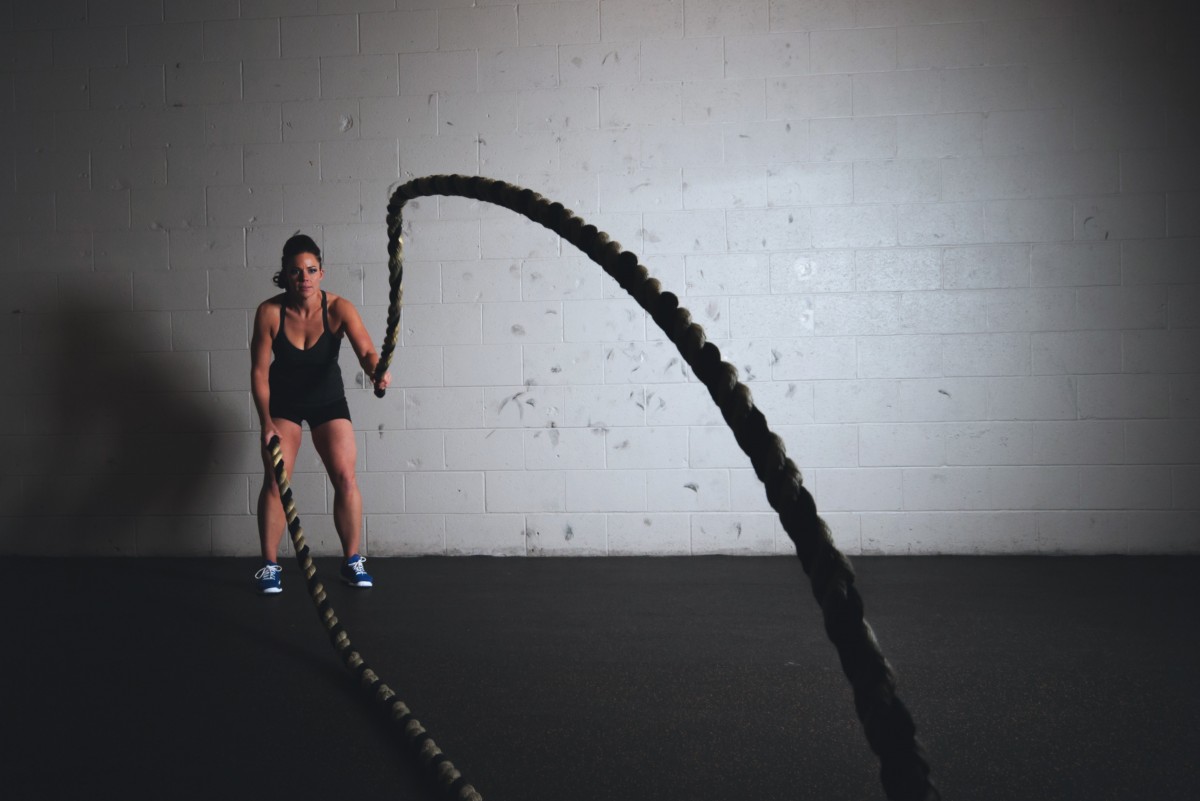I have taken some heat about speed and sports posts. The crux of these posts is that we have to stop thinking of training hundred meter sprinters when we are training athletes to run fast. While the techniques and training modes of hundred meter sprinters work great for them, focusing solely on these can ignore the needs of athletes.
With that in mind, today’s post is going to look at baseball – specifically the offensive side of baseball and speed training. First, let’s begin by looking at the situations that we are preparing our baseball athletes for on the offensive side of things:
- Running to first base
- Running past first base
- Stealing a base
- Sliding
Running to first base:
Running to first base happens after the ball has been hit. This is complicated by whether the athlete hits as a right-handed hitter (and so is facing towards first base when they hit the ball) or is a left-handed hitter and is not facing towards first base. The picture below shows a left-handed hitter.
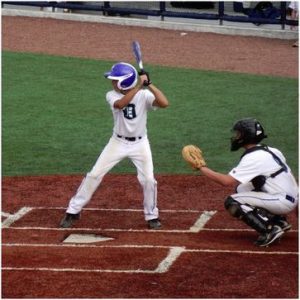
The athlete has to react to a 60-100 mile per hour pitch, hit the ball, then react fast enough to realize that he has hit the ball, face the appropriate direction, and sprint towards first base.
Often today the hitting stance is being coached to have the feet spread apart wider than the shoulders, with much of the weight on the back leg. The athlete will take a short stride with the front leg (less than 4-5 inches often), and rotate the hips to make contact with the ball. This will look something like the image below when it’s completed.
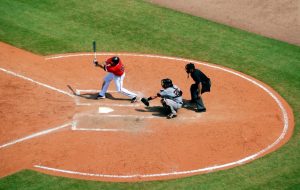
This is not an ideal position to start a sprint from. The point being that this has to be practiced over and over again so the athlete can execute it quickly.
Running past first base:
First base is 90 feet from home plate in the majors. So that means we’re using maximum velocity running mechanics right? Well, it’s a little more complicated than that. There are several things that can happen as we run to first base:
- First base may be as far as we are getting. In that case we run through the base and turn to the right. Point being we have to be running really fast to be sure to get to the base.
- We may make it to another base because of how good our hit was or due to how badly the defense played it. In that case, we will run towards first base, round the base (stepping on the corner) and accelerate towards second base. So we’ll be running 90 feet, executing a turn, and then running 90 feet more. We may also have to stop on second base (i.e. we can’t run past it).
- We may take that turn at first base, realize we’ve made a mistake, and then have to go back to first base.
All of these situations have to be practiced over and over again.
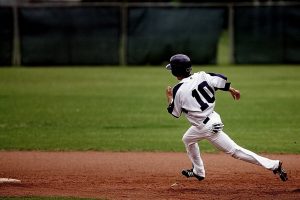
Stealing a base:
This is an art all on its own. The athlete leads off the base, but is facing the infield (i.e. their side is facing the next base). The way the steal is taught is that the athlete is in the ready position. From there they pivot their feet roughly 45 degrees towards the next base, step over with the outside foot, and then step into the sprint with the other foot. In other words, it’s a movement that needs repetitive practice to be smooth and explosive. The other part to stealing a base is that the defense will try to stop the athlete, so they have to be able to stop on the base they are stealing – running past that base means there is a good chance they will be tagged out.
Sliding:
Sliding is a skill. Sliding is to get under a defensive player’s tag, helps the player get to the base quickly, and helps to prevent them from overrunning the base. But, if it’s done incorrectly not only can it be ineffective it can also be dangerous. I’ve seen a bad slide result in a broken leg at home plate before. So this is another speed-related skill that has to be practiced over and over again.
Now, some are going to read this blog and think, “But that’s the baseball coach’s job to coach all those situations.” That partially true, but it’s the strength and conditioning coach’s job to reinforce all of this and to design a speed program that prepares the athlete for the game they are playing, as opposed to preparing them to be a better hundred meter sprinter.
We’ll cover drills in the next post!

